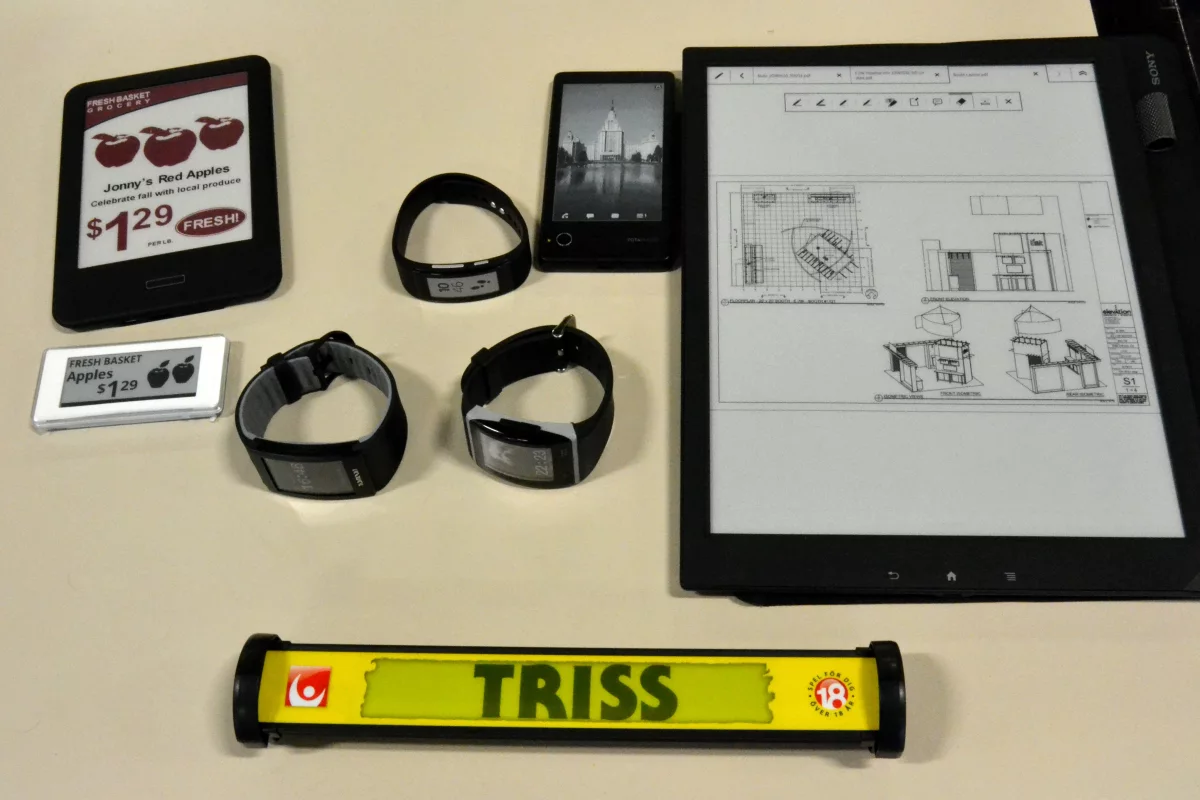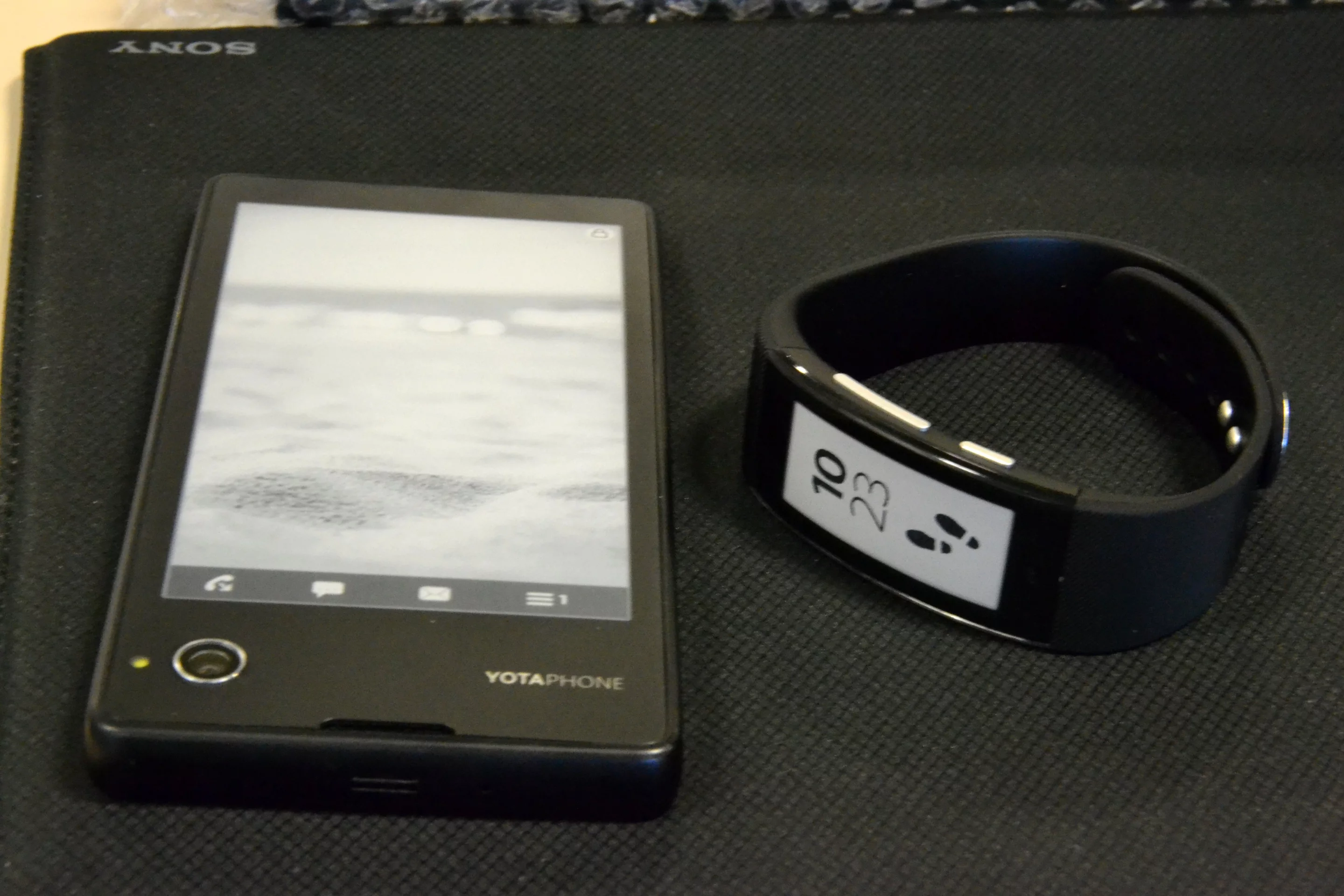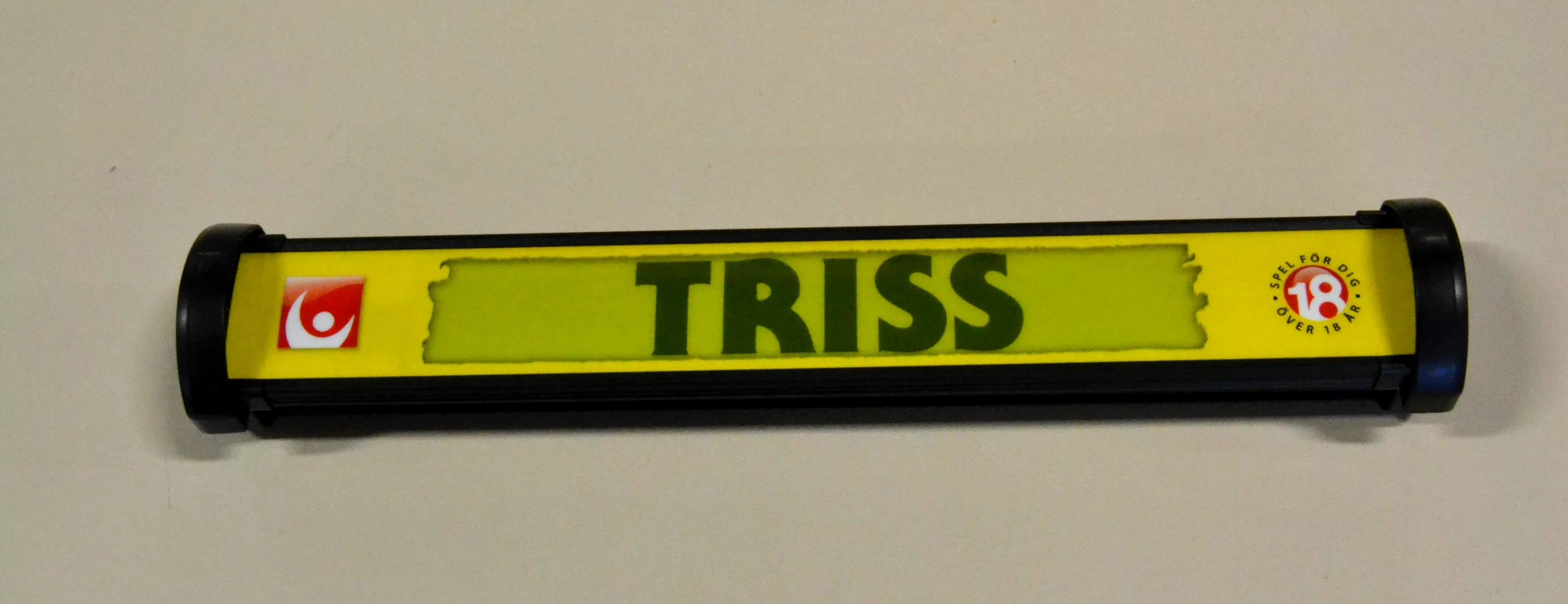Being able to shrink your entire hardback collection down to a single device that you can carry with you everywhere is not the only thing that convinced legions of bookworms to swap paper for e-Readers. If it wasn't for the low fatigue reading experience offered by E Ink, devices like the Kindle and Kobo may not have become quite as popular as they are. But, as E Ink's Director of Product Management Giovanni Mancini told Gizmag at IFA this last week, the low power display technology is finding its way into much more than just e-Readers.
"Though e-Readers are still a significant part of our business, roughly about 10 million units per year, there are a number of different areas that we're moving into," said Mancini. "First, there are electronic shelf tags, where we're replacing the price tag on a shelf with E Ink Spectra."
Announced last year, the Spectra color active matrix offers black and white plus one color for electronic displays and is reported to be just now starting to appear in retail stores on a global basis.
"We've seen the earliest adoptions in Europe, we've also seen large adoption in Asia," revealed Mancini. "Right now in the US we have a number of evaluations running this year, with some customers already confirming orders. It's a significant market, the estimates are in the hundreds of millions of displays. Last year we sold about 12 million displays into this market."

Once placed on store shelves, retailers use whatever networking technology is installed onsite to update the E Ink price tags with new information when needed. "That could be Wi-Fi, it could be ZigBee, some also have NFC, where you don't have a communications technology, but you have a point-to-point handheld device."
Mancini explained that E Ink technology in the retail sector can also help High St or Mall stores keep their real- and digital-world pricing in sync, and also better compete with online-only stores.
"One of the biggest complaints that customers of brick and mortar stores have is that the price in store is different to the price on the website," he said. "This solves that problem, because there is only one pricing database for the website and instore.
"In addition, if you run a brick and mortar store and you're trying to compete with online stores like Amazon where prices sometimes change on a daily basis, but it takes you weeks or months to update your pricing strategy, then you're at a significant disadvantage. With this technology, you can compete, you can change your prices as often as they do. Such stores are also finding that it allows them to charge one or two percentage points above the website price, because of the convenience of getting the product right away."
Electronic ink displays have also moved into the personal mobile space. Recent examples include the dual-screen YotaPhone (with the second generation slated for release later this year) and the just-announced Sony SmartBand Talk, which was debuted alongside the SmartWatch 3 at IFA 2014 in Berlin. Mancini explained that the SmartBand Talk "has what's called a Mobius display, because there's no glass, it's all plastic. So it's fully flexible, very lightweight, and has long battery life."

"After mobile devices, we move into digital signage where we're just starting to introduce products," he continued. "We're partnering with companies like Global Display Systems (GDS) in northern Italy, where they do the system integration and we're currently engaged with them in a number of evaluations."
Of course, LCD and LED digital signage is already pretty widespread, but businesses are starting to ask for cheaper longterm solutions, and this is where E Ink comes in.
"When it comes to large signage, a lot of the vendors will give away their displays for free," Mancini told us. "But what we're finding is that free isn't always free. You might think that LCD is the same kind of technology as in a normal television, but you can't just take your television set and plug it into a public area, especially outdoors. It generates a lot of heat, so you have to include an air conditioning system, and you'd have to ruggedize it. So your typical television LCD now goes into a very large box.
"Places where such systems are installed typically see a large spike in power consumption. So if you put them in a train station or an office building, you might see an increase in the order of 30 percent, and a lot of companies have committed to being greener and reducing power consumption, so they're coming to us and asking how we can help. Our displays don't require air conditioning, they use a lot less power and are a lot easier on the energy bills.
"The other thing is that we don't necessarily require that you have a power cable, so if you think of a bus shelter or information signage in different places, running a power conduit there is your biggest expense. With our solution you can basically place it there and run it on batteries or solar cells."
"We're currently engaged with a number of agencies in Europe for displays in things like gasoline stations, signs on buses as well as timetable and scheduling information at bus stops," he confirmed. "We're also engaged with a number of retailers looking to move to digital signage, but don't want to put LCDs or LEDs in their stores because it totally changes the atmosphere within. They want the advantage of a digital display, but they want to maintain that paper-like look."

The E Ink team demonstrated a 32-inch multi-color display at IFA that was first announced in the beginning of June, and developed in collaboration with GDS. Unlike the rather washed out appearance of some previous electronic paper developments, E Ink's display looks to handle colors pretty well.
"The colors do look richer, because we're able to use 0.25 mm pixels and if you have 0.25 mm pixels on a 32-inch display, we can realize HD resolution," said Mancini. "You're not ever closer than one or two feet away from the display, so at that distance you really don't see any pixelation at all."
"To move color E Ink technology to a personal device, there are a number of things we can do, but what manufacturers are telling us is that they're happy with black and white for e-Readers," he continued. "When you start moving to high resolution color, it's not that we can't deliver it, but what the consumer usually wants is the ability to watch videos, or magazine-level color, they want to surf the web, and that's not something that we support because of the speed of our ink."
The E Ink Corporation has also been involved with a number of speciality products, such as Sony's rather pricey Digital Paper tablet. "One of the challenges that engineers and architects face is how do you bring all your documents, blueprints and CAD drawings to a worksite. So this provides a perfect platform for you to have something which you can take with you, and you don't have to worry that you're outdoors in harsh sunlight conditions.You can also put as many drawings on it as you need thanks to its built-in storage and microSD card slot."
More recently, the company has been working with Sweden's Motion Display on a checkout divider called the Motion e-bar.

"You know when you go shopping and you have this little plastic device that separates your items at the register?" he asked. "This is what's coming next. The moment you pick it up, it senses that you've moved it and the E Ink display shows advertising. So when customers are in line waiting for their turn, this runs adverts for 30 seconds.
"It's basically a very simple display. What you have is a plastic overlay, and you just use the E Ink to highlight the different parts of the overlay. Where it looks like writing is coming up, all we're doing is we're turning the white behind it on or off. So if you want change your advertising, the idea is that you unhook the two end plugs and slide in a new plastic overlay and you now have new advertising."
The e-bar runs on lithium cells which should give months of use before needing to be replaced, and using E Ink rather than LCD technology keeps the divider lightweight while allowing it to be ruggedized to cope with the daily battering it's likely to receive in the hands of consumers. In addition to the divider bar, similar technology is available for a small advertising display that's placed next to the price tag on the store shelf.

As for what's still to come, Mancini teased "what you will see in the coming months and years is the company starting to introduce E Ink into areas not normally associated with display technologies."
You can have a look at that new checkout divider in action in the video below.
Source: E Ink Corporation











